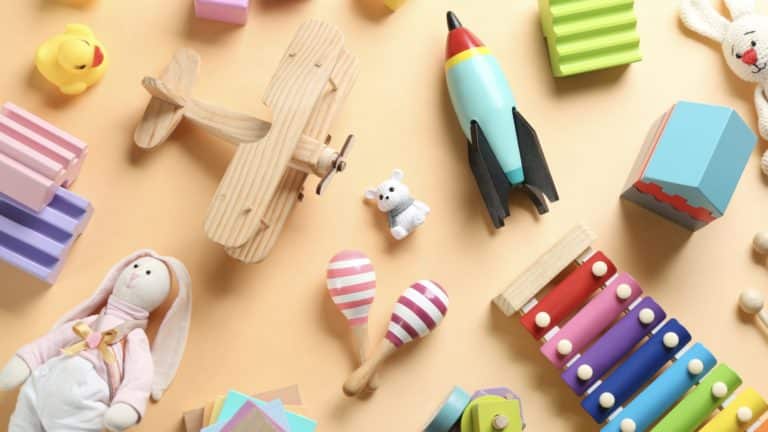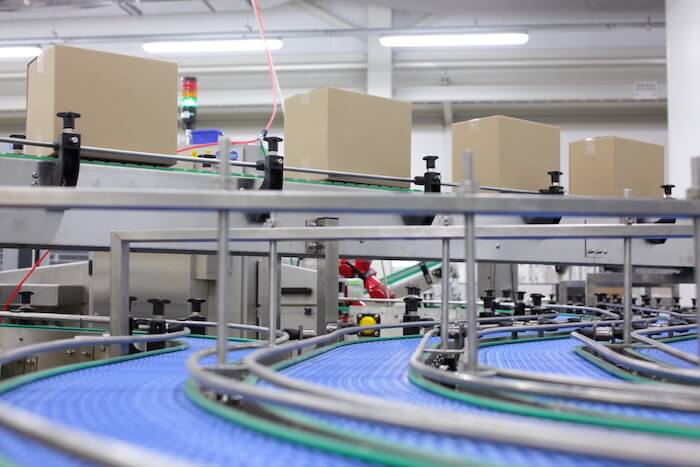Baby care products are a $98 BILLION industry as of 2022.
And the market is estimated to reach $168 billion by 2032.
In other words…
Business is booming for baby product manufacturers.
If you’re just getting started with manufacturing baby products, you might be asking yourself:
- How do I find a high quality manufacturer for my products?
- What’s the best way to make a prototype?
- How do I maintain healthy profit margins as I grow?
And more.
In this guide, we’ll cover them all. You’ll learn how to refine your idea, how to find baby product manufacturers, how to manage the product design process, and more.
Let’s do it.
Step 1: Make Your Idea The Best It Can Be
The product design phase of manufacturing baby products is both important and challenging. Ask yourself these questions to make sure your idea is as rock solid as can be.
1. Is your concept eye-catching?
Your competitors include a wide range of industry giants like Graco, Johnson & Johnson, Procter & Gamble, and other major brands. You’ll also face competition from companies that have already established themselves in your local market.
To build on your idea, start by conducting research.
Read popular trade magazines like Baby Maternity Retailer, Baby And Children Product News, and Baby Care Magazines International.
During fieldwork, visit stores to look at the advertising, products in different price ranges, different categories, and promotional campaigns. Online databases can help you locate baby product stores near you.
Research popular online stores such as Babies Bloom Store and Baby Mall Online.
Look for the following features as you browse:
- User-friendly design
- Well-planned cart navigation
- Mobile-friendly interface
- Eye-catching online marketing techniques
- High-quality products
2. Is your concept profitable?
Great products have a specific yet wide-ranging appeal.
Use the following criteria as a guide to determine how profitable your product can be.
The product needs to be safe, high-quality, and fulfill unmet customer demands.
Next, think about the landscape of the baby product industry. Local and international competition, growth potential, and competitive pricing are factors to consider here.
Lastly, the market criteria are threefold. The product needs to be following current market trends, be user-friendly, and have a reasonable production cost.
Visit “Understand Your Market”, an educational resource run by the US Small Business Administration, to read more about creating a marketable concept.
Lastly, make sure you can grow your business and create a whole product line based on the same core concept. Use your USP and adapt it to follow different seasonal trends, color palettes, and limited edition products.
3. Is your concept cost-effective?
Before committing to mass production, getting a reliable cost estimate and allocation is crucial. You can use various accounting methods for this. An easy way to do this is to contact our dedicated group of professionals to help you calculate these costs..
Prototype production varies greatly depending on your idea. We suggest using Computed Aided Designs to simulate your products before committing to a prototype.
Prototyping companies can help in this endeavor.
Once a prototype is ready, contact potential manufacturers to get a cost estimate, which will differ based on your production scale.
4. Does your concept follow safety standards?
Multiple organizations have standards for different types of products. Juvenile Products Manufacturers Association provides certification that many parents look for while buying products. American Society of Testing and Materials has specific guidelines for different baby products.
Resources are also available for international safety standards.
5. Is your concept patented?
Patent attorneys are authorized to perform patent searches, including scanning several databases for existing patents on a particular idea.
It takes a long time to get a patent by yourself because it’s a complex process, which is why we don’t suggest you do this alone.
This stage is critical for your research because major retailers might have patented designs that aren’t yet available on the market.
6. Does your concept have a potential market?
The range of baby products you could manufacture is a mile long.
Wet wipes, baby car seats, baby blankets, baby soap, formula milk, baby playpens, baby teethers, baby walkers, baby wash, baby body oil—the list goes on.
Before you commit to a concept, it’s crucial to make sure a market exists for it. You don’t want to spend months (or years) on product design, manufacturer sourcing, building an active network of suppliers, blasting product announcements, and spending buckets of cash building a product that nobody actually wants to buy.
Which brings us to one of the most important steps of the entire process…
Step 2: Understand Your Customers
Before you dive head first into product design, prototyping and manufacturing—conduct research into the customers you’re planning to target.
- Which age and gender groups are they in?
- What do they do for work?
- What do they do in their spare time?
- Are there common hobbies or interests among the group?
- How many kids do they have?
- Is this their first child?
Categorizing a target audience will let you focus your marketing and packaging efforts on creating a look that appeals to them.
Plus, understanding your ideal customer can shed light on what other products they may also be interested in based on the stage of development their child is likely in.
For example, parents in the market for pacifiers will also most likely be looking for baby wipes, cribs, sensory toys, and other products popular for children in that age group.
Remember, advertising efforts will be focused on parents, especially when promoting products for infants.
Step 3: Design Your Product
You can begin designing once you have a clear vision and a target audience in mind. Start sooner than that and you risk chasing un-vetted ideas that could easily flop.
The steps in the list below will assist you in manufacturing baby products that everyone will love:
1. Brainstorm the fine details of your product
Brainstorming helps you understand how the rest of the baby product manufacturing process will go. That includes details like packaging, marketing, and production scale.
You want to get all your ideas out so that you can sift through them to make decisions about the next few steps. We suggest using your competitive market analysis as a barometer for this session.
The following checklist can act as a guideline to direct your brainstorming session:
- Mission statement and motto – your end-goal for this product and the ethos you want your business to embody.
- Product – your unique selling point and how you’re going to achieve it.
- Pricing – what is a fair cost for your product.
- Placement – where you will sell your product (your store, other retail locations, pop-up stores, etcetera).
- Packaging – what do you want the product look like on the shelves?
- Promotion – what your advertising will look like and who it aims to captivate.
The brainstorming session will assist you in developing an insightful project guideline.
2. Make product sketches
To make sketches for the product, you can either hire a professional artist or do it yourself. Use the brainstorming session as a guide to ensure you don’t forget anything.
Think about things like size, color, and potential variations for future products.
3. Visualize Your Product With 3D Models
With the initial sketch in hand, you can begin designing a 3D model. To build a digital model, artists use CAD (Computer-Aided Design) software.
Depending on the artist, this process will take anywhere from one to seven days.
You can create a 3D model on your own using software like Zbrush, but we recommend hiring a professional.
Step 3: Design A Prototype
The process of building prototypes for baby product manufacturing can vary significantly.
Depending on your product, you may need to consult a professional. You can make samples of simple products such as fabric-based products at home. However, products that require complex machinery may need to go through a professional prototyping company.
An easy way to differentiate between complex and straightforward prototypes is to research their respective manufacturing processes.
The more technical the process, the better it is to hire a professional for this step. For example, manufacturing a toy is a highly complex process requiring professional assistance.
For instance, baby clothes only require fabric, thread, and a sewing machine. However, manufacturing a stroller requires aluminum or plastic to be bent into a frame, numerous belts, and buckles.
Step 4: Hire A Suitable Factory
You’ll need to find a factory that’s compatible with your needs for mass production.
Retailers and manufacturers handle mass production in different ways. A retailer will take over the entire process, allowing you to focus on the creative factors, while a manufacturer will require you to handle the supply chain.
You can either work with retailers or contact a manufacturer yourself. Retailers already have contacts in the manufacturing industry and can take over the process once they agree to partner with you. However, it’ll give you less creative control over the process.
Local and international manufacturers can help you start mass production. You can keep an eye on local manufacturers to tweak the process, but they tend to cost more. Outsourcing is cheaper, but field visits can be time-consuming.
Because of their long-standing deals with wholesalers, working with a well-known retailer would help speed up this process. They’ll also have partnerships with factories with high-grade equipment.
You can outsource the entire manufacturing process to factories in other countries to save money. Trade fairs are an excellent place to start your search for a factory.
Contact your local economic development chapter to get in touch with a global expert who has vetted manufacturers in other countries and will represent you.
Step 5: Decide on a Supply Chain Strategy
By now, you’ll have a detailed understanding of what your product is, what you want it to look like, how you plan to promote it, and who it’s for.
When deciding on your supply chain strategy, consider the following steps.
1. Procure Quality Materials
The production line starts with sourcing raw materials. This step will differ depending on the type of baby product you want to make. For example, a stroller will require you to source metals like aluminum for the frame and fabric for the seat.
Building relationships with suppliers to source your materials is critical.
Experts in supply chain management will advise you on aligning your needs with what’s available in the supply market. Quality and profit margins will both be decided by your investment in raw materials.
Our professionals at Gembah can help you get the best raw materials for your product.
2. Have a Seamless Manufacturing Line
Manufacturing a product requires the use of raw materials, machinery, analytics, and other industrial knowledge. It’s best to consult with experts in the field, such as our team at Gembah.
The following are some of the most important steps:
- Forecasting demand
- Identifying bottlenecks in the process
- Analysis of throughput accounting
- Supervising performance and productivity
3. Delivery Procedures
It’s vital to know the mode of delivery. Depending on your target audience and product placement, numerous excellent options optimize the process and reduce the selling cost.
For example, if you are short on inventory storage space, using the technique of cross-docking, you can optimize the process.
The following are the key players in the delivery process.
- Wholesalers play a significant role because the flow of inventory is dependent on them. Developing long-term relationships and determining delivery timings and methods can be tricky if you work independently.
- Retailers are crucial because they have direct contact with your customers.
You must assess the incentive schemes offered to retailers to determine an appropriate margin and promotional shelves. These incentives encourage retailers to display products in the best possible location based on consumer behavior.
5. Meeting The Customer’s Needs
The final part of the system is the consumer.
A careful review is required to determine the price, product packaging, expedite sales returns, product placement, and meet customers’ requirements. Extensive research into consumer behavior, a thorough analysis of data gathered through CRM, and other factors help determine this step.
You also must have a system in place for faulty products and customer returns. Great return policies increase consumer satisfaction and the parent company’s good faith.
Because these factors are essential in retaining customers, we suggest that you prioritize them as you would any other process for long-term success.
It’s Time To Start
For those who are new to the industry, the complexity of manufacturing baby products can be scary. That is where our team at Gembah can help you build a successful business.
We can connect you with a network of experts to help you…
- Optimize the entire process by guiding you through the right way to conduct each phase.
- Have a team of experienced developers available so that you create the perfect product.
- Find a factory that is perfectly suited to your needs.
- Keep an eye on the manufacturing process to ensure the integrity of your product and the timeliness of deliveries.
- Avoid common mistakes like a lack of planning.
- Develop a product that is worth the investment.
- Significantly raise your profit margins by preventing wasted cash.
- Investigate the market to ensure that your product is the best in the industry.
- Produce high-quality products on time to build a long-term customer base.
No matter where you are in the process today, we can help simplify the entire process and maximize the chances of a positive outcome for your company.



